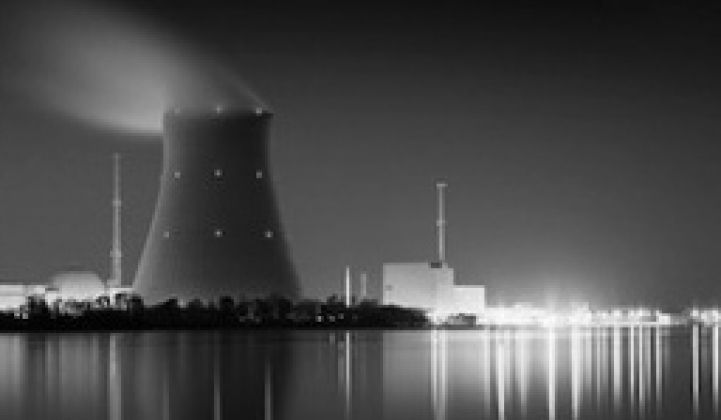GTM has long considered Kurion's business in nuclear-waste cleanup at Fukushima and other radioactive sites an untold cleantech story that goes along with IPO-sized revenue.
But it won't be an IPO for Kurion -- the company just announced that it has been by acquired by Veolia for $350 million to provide "nuclear facility cleanup and treatment of low- and medium-level radioactive waste."
Kurion was incubated by Lux Capital with investment from Firelake Capital and private investor Arthur Samberg. Josh Wolfe, from Lux, is the chairman. The company has raised less than $6 million since its inception, according to a variety of sources. If that figure is accurate -- this is a home run of a VC investment.
According to a release, "The acquisition completes a critical part of Veolia's strategy in the nuclear cleanup sector." Veolia specializes in characterizing waste and assessing nuclear sites, in water and waste treatment, and in soil remediation. Kurion's skills lie in radioactive waste separation, vitrification and robotics for access to difficult sites.
The Fukushima event in Japan accelerated Kurion's development as a player in the nuclear industry, with Kurion serving as the only startup in a big-time multinational consortium treating the contaminated seawater at the nuclear plant operated by Tokyo Electric Power Company. The company would not disclose the revenue generated from that project.
Kurion has been in partnership with Pacific Northwest National Laboratory to test and demonstrate its Modular Vitrification System.
When we last reported on the company, Kurion likened the system deployed at Fukushima to an industrial-scale Brita-type water filter where radioactive water flows through steel vessels filled with its proprietary media to "pick out the isotopes" specified by the customer. When depleted, the vessel/media combination is then removed and stored with replacement vessels/media inserted into the system. That's the first phase of Kurion's business. The next phase is completing the development and commercialization of its vitrification technology: immobilizing the nuclear material (e.g., depleted/isotope-laden media) into a stable, leach-resistant glass matrix.
Kurion's Modular Vitrification System uses inductive energy to convert waste into glass directly inside the final disposal container. The end-canister method is simpler and potentially less expensive than the traditional approach using large joule-heated melters. Developed for high-level waste where waste-form stability overrides cost concerns, vitrification has yet to become economical for the high-cesium-content low-level wastes typically found at nuclear power plants or Fukushima -- but that's a paradigm that Kurion intends to change.
"We had removed 8.4 million curies in the first year" at Fukushima, said a company exec. Putting that into perspective, the entire U.S. nuclear fleet disposes of 500,000 curies in total.
Nuclear power plants don't emit greenhouse gases during operation, and they produce small amounts of low-level waste in their daily operation. While the decision to recycle spent fuel has been resolved in countries like France, the decision of what to do with it in the U.S. remains controversial, despite federal law designating Yucca Mountain in Nevada as its repository. Certainly, unused fuel, radioactive waste and uranium mining cannot be classified as green or renewable.
Unlike in Germany or Japan, which are both scaling back their reliance on nuclear power, nuclear power in the U.S., U.K. and Canada and many existing nuclear-reliant countries is going to continue to be part of the electricity mix for the foreseeable future. For the U.S., that's due to two reasons: first, because the U.S. has so much of it -- it produces more gigawatts of nuclear than any other nation from its 100 reactors. And second, it's because the U.S. nuclear power industry, the Department of Energy, and the defense industry are all intimately linked.
So the U.S. has a huge and mounting problem: millions of gallons of liquid nuclear waste stored at nuclear power plants and large government sites that date back to the Manhattan Project (for example, there are 50 million gallons of waste at the Hanford site alone). Kurion's initial focus is on the commercial nuclear power plant market and its 440 nuclear reactors worldwide. Kurion's other market is waste left over from the Cold War era -- materials that will take 20 to 30 or more years to clean up. This originated from making fuel and bomb-grade materials, acids and other hazardous materials.
The Kurion acquisition is subject to approval by U.S. authorities.



